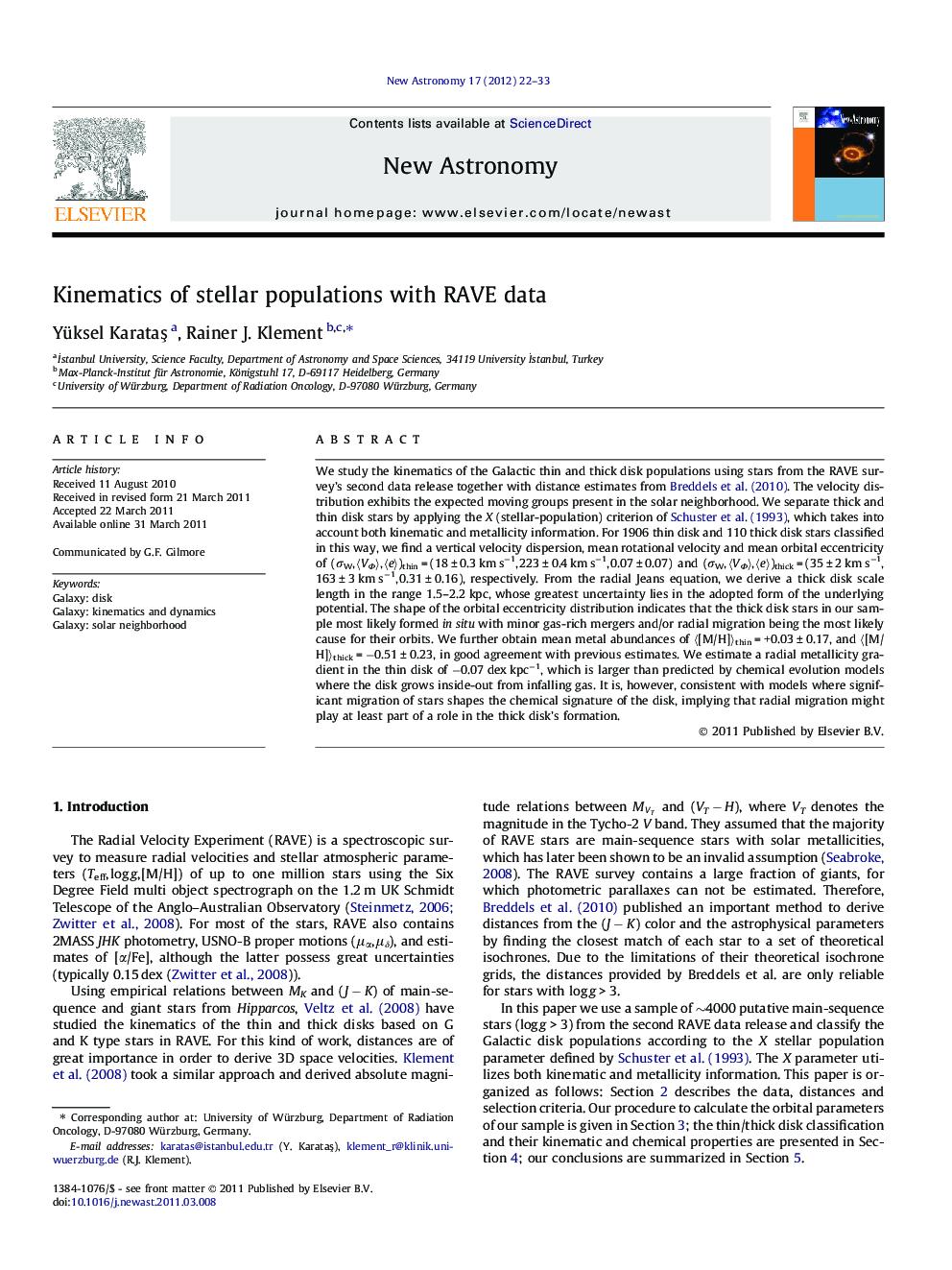| Article ID | Journal | Published Year | Pages | File Type |
|---|---|---|---|---|
| 1779403 | New Astronomy | 2012 | 12 Pages |
Abstract
We study the kinematics of the Galactic thin and thick disk populations using stars from the RAVE survey's second data release together with distance estimates from Breddels et al. (2010). The velocity distribution exhibits the expected moving groups present in the solar neighborhood. We separate thick and thin disk stars by applying the X (stellar-population) criterion of Schuster et al. (1993), which takes into account both kinematic and metallicity information. For 1906 thin disk and 110 thick disk stars classified in this way, we find a vertical velocity dispersion, mean rotational velocity and mean orbital eccentricity of (ÏW, ãVΦã, ãeã)thin = (18 ± 0.3 km sâ1, 223 ± 0.4 km sâ1, 0.07 ± 0.07) and (ÏW, ãVΦã, ãeã)thick = (35 ± 2 km sâ1, 163 ± 3 km sâ1, 0.31 ± 0.16), respectively. From the radial Jeans equation, we derive a thick disk scale length in the range 1.5-2.2 kpc, whose greatest uncertainty lies in the adopted form of the underlying potential. The shape of the orbital eccentricity distribution indicates that the thick disk stars in our sample most likely formed in situ with minor gas-rich mergers and/or radial migration being the most likely cause for their orbits. We further obtain mean metal abundances of ã[M/H]ãthin = +0.03 ± 0.17, and ã[M/H]ãthick = â0.51 ± 0.23, in good agreement with previous estimates. We estimate a radial metallicity gradient in the thin disk of â0.07 dex kpcâ1, which is larger than predicted by chemical evolution models where the disk grows inside-out from infalling gas. It is, however, consistent with models where significant migration of stars shapes the chemical signature of the disk, implying that radial migration might play at least part of a role in the thick disk's formation.
Related Topics
Physical Sciences and Engineering
Physics and Astronomy
Astronomy and Astrophysics
Authors
Yüksel KarataÅ, Rainer J. Klement,
